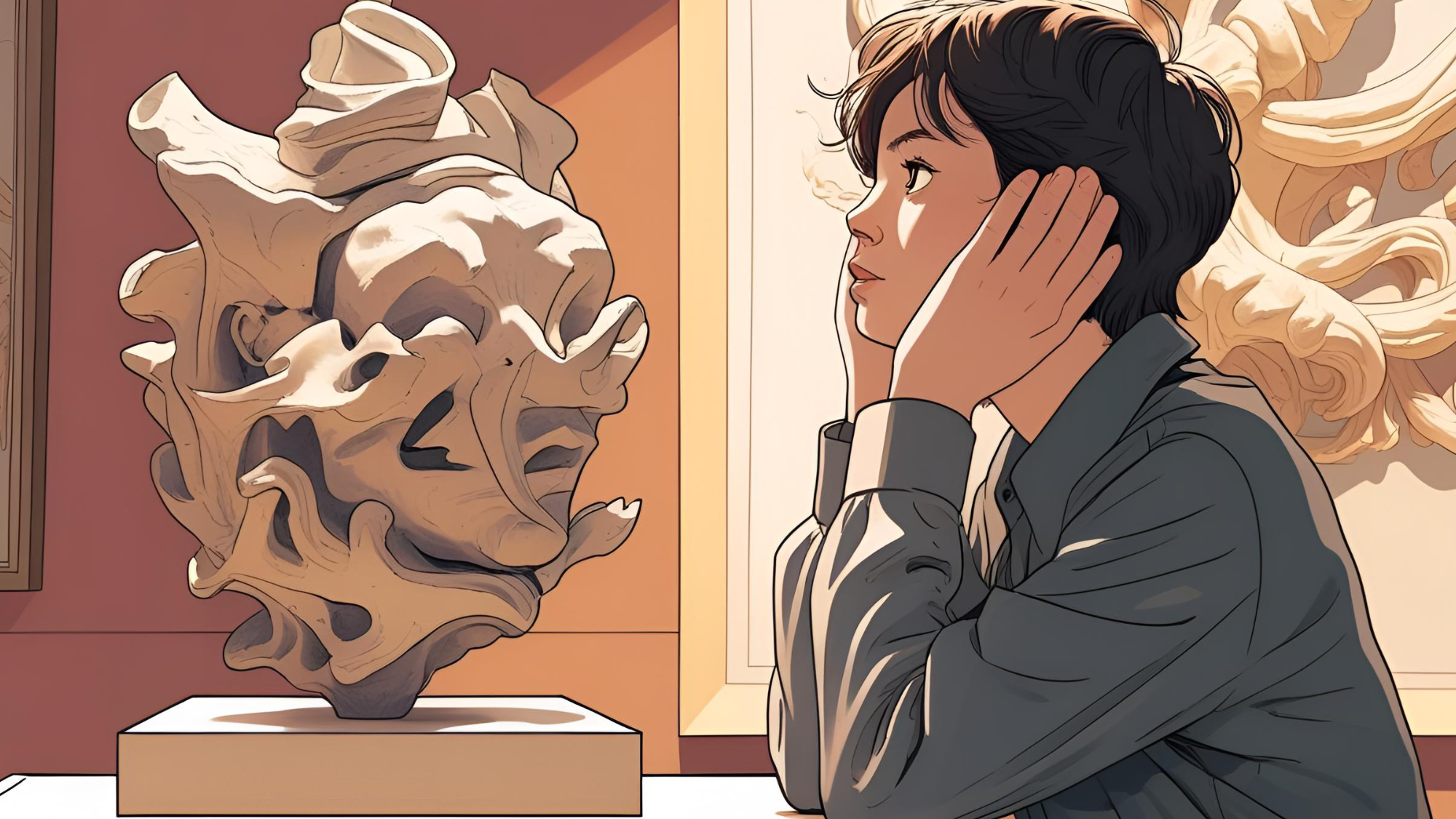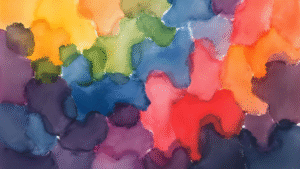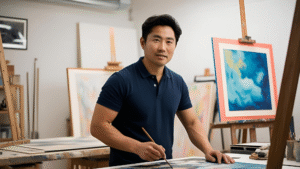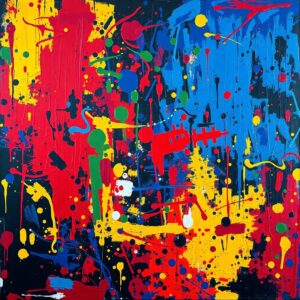It’s amazing how art can tell your story when words just aren’t enough. You’ve probably felt that moment when a painting or photograph stopped you in your tracks and touched your heart. Art speaks a special language that goes beyond what you can say out loud – through colors, shapes, and feelings that flow straight to your soul. Whether you’re looking at a sunset painting or an abstract piece, each brushstroke and line carries emotions that words sometimes can’t capture. This visual language helps you share your deepest thoughts and connect with others in ways that talking never could.
Key Takeaways:
- Art speaks directly to our hearts and minds in ways that go beyond regular words – it’s like having a conversation without talking, using shapes, colors, and feelings instead.
- When we feel too much to put into words, art gives us a way to share our deepest thoughts and emotions, whether through painting, drawing, or any other creative form.
- Visual art breaks down barriers between people from different backgrounds because everyone can understand feelings shown through colors and shapes, no matter what language they speak.
- Looking at art helps us see the world in new ways and connect with parts of ourselves we might not know how to talk about – it’s like finding hidden treasures in our minds.
- Artists use their work as a bridge to help others understand big ideas or complex feelings that might seem too hard to explain with just words.
The Essence of Artistic Expression
To understand art’s power, you need to look beyond the surface. Just like in The Legend of Bestu Bay’s mystical tales, art speaks in ways that touch your soul. When you stand before a painting, you’re not just seeing colors and shapes – you’re experiencing a universal language that breaks through cultural barriers.
What is the Unseen Language?
Around 90% of the information your brain processes is visual. This hidden dialogue happens when you connect with art through symbols, colors, and forms that spark emotional responses. Your mind naturally understands these visual cues, making art a powerful tool for sharing ideas that words can’t express.
The Importance of Emotion in Art
On a deeper level, art taps into your feelings in ways that transform your perspective. Studies show that viewing art can reduce stress by up to 75% and boost your mood. When you look at a piece that moves you, your brain releases feel-good chemicals, creating a natural high.
Further exploring this connection, you’ll find that art helps you process complex emotions. Whether you’re creating or viewing art, it gives you a safe space to explore difficult feelings and challenging experiences. It’s like having a conversation without words, where your heart does all the talking.
Colors and Their Impact
While colors shape your daily experiences in ways you might not notice, they speak a powerful universal language that crosses cultural boundaries. As explored in Look at Me: Art’s Silent Voice, your brain processes visual information 60,000 times faster than text, making colors your instant emotional communicators.
The Psychology of Colors
With each color you see, your brain triggers specific emotional responses. Red can boost your energy by 31%, while blue can calm your nerves and lower blood pressure. Yellow brightens your mood, and green helps reduce your eye strain. These reactions happen automatically, influencing your feelings and decisions before you even realize it.
How Colors Communicate Feelings
The language of colors speaks directly to your heart. Warm tones like orange and red spark joy and excitement, while cool shades like blue and purple bring peace to your space. Research shows that 85% of your product choices are based on color alone, showing how deeply colors affect your decisions.
Also, you’ll find that colors can transform your mood and environment. When you’re feeling down, surrounding yourself with bright yellows can lift your spirits. In your workspace, blue can boost your productivity by 15%, while soft greens can make your home feel more balanced and peaceful.
Forms and Textures in Art
Unlike words on a page, visual art speaks through a rich vocabulary of forms and textures. When you look at a piece of art, you’re engaging with a language that goes beyond what your mind can put into words. This silent dialogue between you and the artwork creates a powerful connection that can touch your emotions in ways that verbal communication often can’t.
Shapes That Speak Volume
Across different art styles, shapes tell their own stories. You might notice how geometric patterns create stability, while flowing curves suggest movement and grace. Studies show that 85% of viewers respond emotionally to circular shapes before they even process what they’re looking at. When you see these forms in art, your brain naturally finds meaning, making connections that words sometimes can’t express.
The Role of Texture in Emotional Depth
Against smooth or rough surfaces, your fingers and eyes work together to understand the artwork’s message. Texture adds a physical dimension to visual storytelling, making your experience more complete. Whether it’s the soft blur of watercolors or the thick layers of oil paint, each texture speaks to your senses in unique ways.
With texture as your guide, you can discover deeper layers of meaning in art. Research indicates that tactile elements in artwork can increase viewer engagement by 40%. You might find yourself drawn to run your fingers across a canvas (though most museums won’t let you!), or leaning in close to examine the interplay of rough and smooth surfaces. These physical qualities help you connect with the artist’s emotions and intentions on a more intimate level.
The Silent Stories Behind Art
After viewing art, you might find yourself moved without knowing exactly why. Art speaks in whispers and shouts, telling stories through shapes, colors, and textures that touch your heart before your mind catches up. It’s like finding a secret message that only your emotions can decode.
Personal Experiences and Narratives
Silent moments in your life often find their voice through art. When you look at a painting, you bring your own story to it. Research shows that 65% of people connect more deeply with art that reflects their personal experiences. Your interpretation becomes part of the artwork’s ongoing conversation.
The Power of Universal Themes
The language of art crosses all borders. Whether you’re looking at cave paintings from 30,000 years ago or modern digital art, certain themes like love, loss, and hope speak to everyone. Studies reveal that viewers from different cultures often share similar emotional responses to basic visual elements.
Understanding these universal themes helps you connect with art on a deeper level. When you see how artists use light to represent hope or dark colors to express sadness, you’re tapping into a shared human experience. Art galleries report that pieces dealing with universal emotions receive 40% more viewer engagement than other works.
Bridging Cultures Through Visuals
For centuries, art has been your universal translator, speaking when words fall short. Through paintings, sculptures, and digital creations, you can share your stories across borders without saying a word. Visual art breaks down language barriers, letting you connect with people from different backgrounds in ways that feel natural and meaningful.
Art as a Cross-Cultural Language
Cross-cultural communication becomes effortless when you express yourself through art. Whether you’re looking at cave paintings from 40,000 years ago or modern street art, you can understand the basic human emotions they convey. Studies show that 65% of people better understand complex ideas through visual elements, making art a powerful tool for sharing experiences across cultures.
The Role of Community in Artistic Expression
Above all, art thrives in community settings. When you create or share art in groups, you build stronger social bonds and deeper understanding. Your local art festivals, community murals, and shared creative spaces become meeting points where different cultures blend and learn from each other.
Considering how art shapes communities, you’ll find that shared artistic experiences create lasting connections. In fact, communities with active art programs report 30% higher social cohesion. When you participate in community art projects, you’re not just making something beautiful – you’re building bridges between different cultures and generations.
Art as a Tool for Healing
Your journey through art therapy opens new paths to emotional wellness. When words feel stuck, art becomes your voice, helping you express deep feelings through colors, shapes, and textures. When Words Fail: Art as Your Emotional Voice shows how creating art reduces stress by up to 75% and helps you process complex emotions.
Therapeutic Benefits of Creating Art
On your path to healing, art-making becomes your natural medicine. Regular creative activities lower cortisol levels by 40%, helping you feel calmer and more centered. Drawing, painting, or sculpting lets you explore your feelings safely, while boosting your mood and self-awareness. Art gives you a chance to express yourself without judgment.
Art’s Role in Processing Grief and Trauma
The power of art helps you navigate through difficult times. Studies show that art therapy reduces anxiety symptoms by 65% in people dealing with trauma. Your artwork becomes a safe space to process painful memories and emotions, turning your struggles into meaningful visual stories.
With each brushstroke or pencil mark, you create a bridge between your inner world and healing. Art therapy sessions give you tools to transform negative experiences into sources of strength. Your artistic expression helps release trapped emotions while building resilience and hope for the future.
Conclusion
As a reminder, art gives you a special way to share your deepest feelings when words just aren’t enough. You can tell your story through bright colors, shapes, and images that speak directly to people’s hearts. Your artistic voice breaks through language barriers and connects with others on an emotional level. When you create art, you’re not just making something pretty – you’re speaking a universal language that everyone can understand. This powerful tool helps you express the parts of life that are hard to put into words, making your experiences visible and meaningful to others.
FAQ
Q: How does art speak without using words?
A: Art uses colors, shapes, and lines to share feelings and stories. Just like a smile shows happiness without saying it, red can show passion, or dark colors might show sadness. When you look at art, your brain picks up these visual hints naturally, helping you understand the message even if no one explains it.
Q: Why do some feelings feel easier to draw than to say?
A: Sometimes big feelings like love, grief, or joy are hard to put into words. Art gives us a way to show these feelings through pictures. Drawing a stormy ocean might show inner turmoil better than trying to explain it. Think of art as a heart-to-heart talk without speaking.
Q: What makes visual art so powerful in sharing experiences?
A: Art crosses language barriers and speaks to everyone. A painting of a sunset looks beautiful whether you speak English, Chinese, or Arabic. Art also lets people share tough experiences safely, like using abstract shapes to show pain or healing. This makes art a bridge between different people and cultures.
Q: How can I understand what an artwork is saying?
A: Trust your first reaction to the art. Notice what catches your eye and how it makes you feel. Look for basic things like bright or dark colors, smooth or rough textures, and familiar shapes. There’s no wrong way to understand art – your personal connection to it matters most.
Q: Can anyone learn to speak through art?
A: Yes! Everyone can use art to express themselves. Start with simple doodles, pick colors that match your mood, or take photos of things that move you. Don’t worry about making it perfect – focus on showing how you feel. Art is about sharing your unique voice, not following rules.
